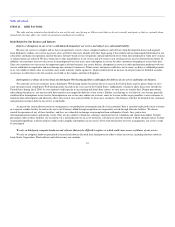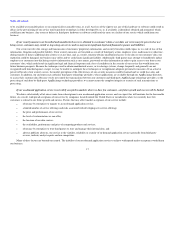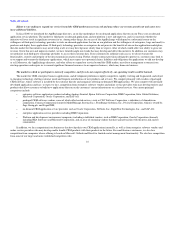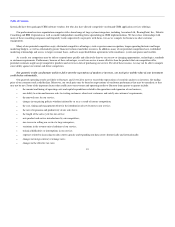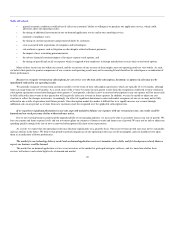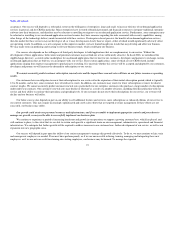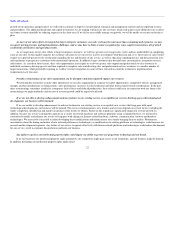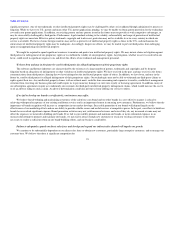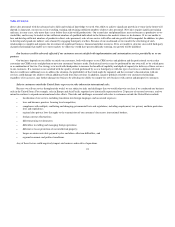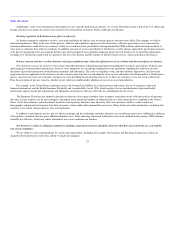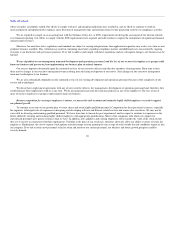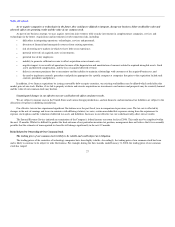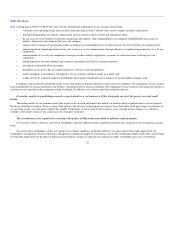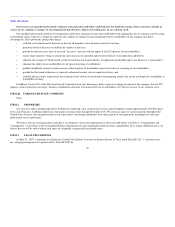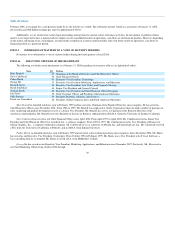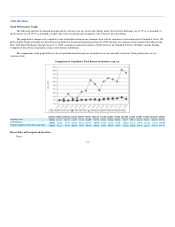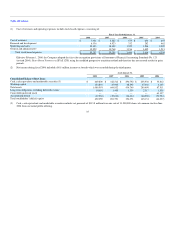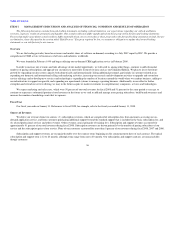Salesforce.com 2007 Annual Report Download - page 29
Download and view the complete annual report
Please find page 29 of the 2007 Salesforce.com annual report below. You can navigate through the pages in the report by either clicking on the pages listed below, or by using the keyword search tool below to find specific information within the annual report.
Table of Contents
whose securities are publicly traded. Our efforts to comply with new and changing regulations have resulted in, and are likely to continue to result in,
increased general and administrative expenses and a diversion of management time and attention from revenue-generating activities to compliance activities.
We are required to comply on an on-going basis with the Sarbanes-Oxley Act, or SOX, requirements involving the assessment of our internal controls
over financial reporting. Our efforts to comply with the SOX requirements have required, and will continue to require the commitment of significant financial
and personnel resources.
Moreover, because these laws, regulations and standards are subject to varying interpretations, their application in practice may evolve over time as new
guidance becomes available. This evolution may result in continuing uncertainty regarding compliance matters and additional costs necessitated by ongoing
revisions to our disclosure and governance practices. If we fail to address and comply with these regulations and any subsequent changes, our business may be
harmed.
We are dependent on our management team and development and operations personnel, and the loss of one or more key employees or groups could
harm our business and prevent us from implementing our business plan in a timely manner.
Our success depends substantially upon the continued services of our executive officers and other key members of management. From time to time,
there may be changes in our executive management team resulting from the hiring or departure of executives. Such changes in our executive management
team may be disruptive to our business.
We are also substantially dependent on the continued service of our existing development and operations personnel because of the complexity of our
service and technologies.
We do not have employment agreements with any of our executive officers, key management, development or operations personnel and, therefore, they
could terminate their employment with us at any time. We do not maintain key person life insurance policies on any of our employees. The loss of one or
more of our key employees or groups could seriously harm our business.
Because competition for our target employees is intense, we may not be able to attract and retain the highly skilled employees we need to support
our planned growth.
To continue to execute on our growth plan, we must attract and retain highly qualified personnel. Competition for these personnel is intense, especially
for engineers with high levels of experience in designing and developing software and Internet-related services and senior sales executives. We may not be
successful in attracting and retaining qualified personnel. We have from time to time in the past experienced, and we expect to continue to experience in the
future, difficulty in hiring and retaining highly skilled employees with appropriate qualifications. Many of the companies with which we compete for
experienced personnel have greater resources than we have. In addition, job candidates and existing employees often consider the value of the stock awards
they are to receive in connection with their employment. Volatility in the price of our stock may, therefore, adversely affect our ability to attract or retain key
employees. Furthermore, the cost to expense stock options may discourage us from granting the size or type of stock awards that job candidates require to join
our company. If we fail to attract new personnel or fail to retain and motivate our current personnel, our business and future growth prospects could be
severely harmed.
26


